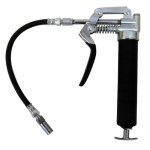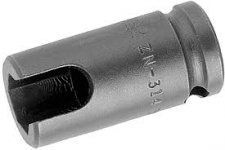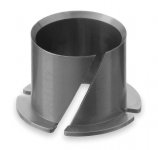-
There were many reasons for the change of the site software, the biggest was security. The age of the old software also meant no server updates for certain programs. There are many benefits to the new software, one of the biggest is the mobile functionality. Ill fix up some stuff in the coming days, we'll also try to get some of the old addons back or the data imported back into the site like the garage. To create a thread or to reply with a post is basically the same as it was in the prior software. The default style of the site is light colored, but i temporarily added a darker colored style, to change you can find a link at the bottom of the site.
You are using an out of date browser. It may not display this or other websites correctly.
You should upgrade or use an alternative browser.
You should upgrade or use an alternative browser.
Best grease to use for lubing suspension
- Thread starter FAAQ2
- Start date
Grandpot
Active member
A warning about grease! Not all greases are compatible. Grease is oil in a base thickener.
This is an excerpt from an article I found:
David Turner, of Shell, stated it well in the January 2009 issue of Machinery Lubrication:
In bygone days, when simple soaps and clay were the primary thickener types,
compatibility was relatively straightforward. Lithium and calcium soaps were compatible
with one another, and neither was particularly good when mixed with a clay-based
grease. Today, with not only the aforementioned thickeners – but also complex soaps,
polyurea, calcium sulfonate and even more exotic thickeners used in many greases – the
issue of compatibility has become much more complicated…To add to the confusion,
there are some grease specifications that are based solely on grease performance without
regard to grease composition. If greases of different thickener types (both of which meet
the performance requirements of the specification) get mixed in service, dire
consequences can result.
When you mix incompatible greases, one of three things happens:
1. Nothing. Everything is fine.
2. The base thickeners dry up and turn to a concrete type material. Not good.
3. The base thickeners dissolve and release all the oil. Not good.
You need to know what grease was put in at the factory and then use the same type or something compatible.
This is an excerpt from an article I found:
David Turner, of Shell, stated it well in the January 2009 issue of Machinery Lubrication:
In bygone days, when simple soaps and clay were the primary thickener types,
compatibility was relatively straightforward. Lithium and calcium soaps were compatible
with one another, and neither was particularly good when mixed with a clay-based
grease. Today, with not only the aforementioned thickeners – but also complex soaps,
polyurea, calcium sulfonate and even more exotic thickeners used in many greases – the
issue of compatibility has become much more complicated…To add to the confusion,
there are some grease specifications that are based solely on grease performance without
regard to grease composition. If greases of different thickener types (both of which meet
the performance requirements of the specification) get mixed in service, dire
consequences can result.
When you mix incompatible greases, one of three things happens:
1. Nothing. Everything is fine.
2. The base thickeners dry up and turn to a concrete type material. Not good.
3. The base thickeners dissolve and release all the oil. Not good.
You need to know what grease was put in at the factory and then use the same type or something compatible.
Haze
Well-known member
Thanks for the reply. Only on the early Spyders. Mine is a 2013 STS.
There are 8 zerks. The pesky fittings are almost hidden.
The zerks are on the frame end of the upper and lower "A" Frames not at the ball joints
See the Upper Left illustration. Part #11 on the illustration.
https://www.cheapcycleparts.com/oemp...spension-front
There are 8 zerks. The pesky fittings are almost hidden.
The zerks are on the frame end of the upper and lower "A" Frames not at the ball joints
See the Upper Left illustration. Part #11 on the illustration.
https://www.cheapcycleparts.com/oemp...spension-front
BajaRon
Well-known member
I use a fully synthetic grease from Amsoil. Fully synthetic grease is thinner than the standard mineral based greases at room temperature that I have used before. I was surprised that the synthetic grease was thinner. I really expected it to be thicker. At first I thought this might be a disadvantage. Thicker is better, right? But what I learned is that the thinner grease more easily reaches all areas needing lube. Places that thicker grease may never get to. Also, thick grease tends to thin out quite a bit in higher temperatures. A true, fully synthetic grease maintains original viscosity in higher temperatures. So while it may start out thinner, synthetic grease does not get any thinner in heat. Nor does it thicken much when very cold. It will not separate, dry out or wash off like standard grease can. It is also better at preventing metal to metal contact.
It costs more, of course. But it also lasts quite a bit longer, requiring fewer applications over time. I know the 8, A-Arm bushings on a Spyder are a pretty important component to grease. I had to replace all 8 of mine due to wear. The early bushings were engineered poorly and grease was not reaching the back side. They would run dry and wear. Never had a problem after switching to a full synthetic grease.
It costs more, of course. But it also lasts quite a bit longer, requiring fewer applications over time. I know the 8, A-Arm bushings on a Spyder are a pretty important component to grease. I had to replace all 8 of mine due to wear. The early bushings were engineered poorly and grease was not reaching the back side. They would run dry and wear. Never had a problem after switching to a full synthetic grease.
Last edited:
BajaRon
Well-known member
Thanks Ron.
I will be switching to a full synthetic grease.
I think it is worth it. Especially for the small amounts required by the Spyder.
trikermutha
New member
Been using Synthetic grease and oil for years now..:thumbup:
BajaRon
Well-known member
Holy Cow!!!! I have never tried to do this myself, but admit I have a shop do my oil change. I wonder if they grease these fittings????? Can you "get there" with a regular grease gun?
You can get there with a regular grease gun, though one of the small cartridge guns with a flex hose and (for some connections) a side mount head can help. It has been my experience that you can't count on the dealer lubing zerks during a maintenance/service visit like they should. The bushing design was improved on the 2013+ A-Arms. But still, it's a very good idea to lube them. You will not be able to maintain alignment if they start to wear.


Last edited:
BajaRon
Well-known member
OK Ron. Now you have shamed me. I'll have to go crawling under my '13 ST-L and find those fittings. But thanks. Really. I have 49K miles on my spyder and based on tire wear, I still have about perfect alignment. I'd like to keep it that way.
My purpose is never to shame anyone! But I know what you mean. Not much is mentioned about those A-Arm bushings needing lube. I do mine with every oil change now. Probably overkill. But if you have to replace them, overkill doesn't seem so bad!
My purpose is never to shame anyone! But I know what you mean. Not much is mentioned about those A-Arm bushings needing lube. I do mine with every oil change now. Probably overkill. But if you have to replace them, overkill doesn't seem so bad!
Just pullin' your leg a little Ron. But still shame on me for not even knowing they exist and making sure they were lubed at least every other oil change. And overkill never hurts.
BajaRon
Well-known member
Ron, I am getting ready to replace the bushings on my 08 GS.
I ordered OEM parts from Cheap Cycle Parts.
What is the difference between the original bushings and
the newer ones that isn't designed poorly?
It may be that the bushings that you are getting have been redesigned. Maybe not. If I remember correctly, the re-designed bushings had a an angle split in them. They were not a solid piece. Presumably, this angle split helped distribute the lubricant better than the original, solid bushings. Something similar to this.

It has been many years since I did this. So my memory may not be stellar on this one.
Similar threads
- Replies
- 17
- Views
- 1K
- Replies
- 6
- Views
- 198
- Replies
- 6
- Views
- 343
- Replies
- 1
- Views
- 231
- Replies
- 2
- Views
- 2K
